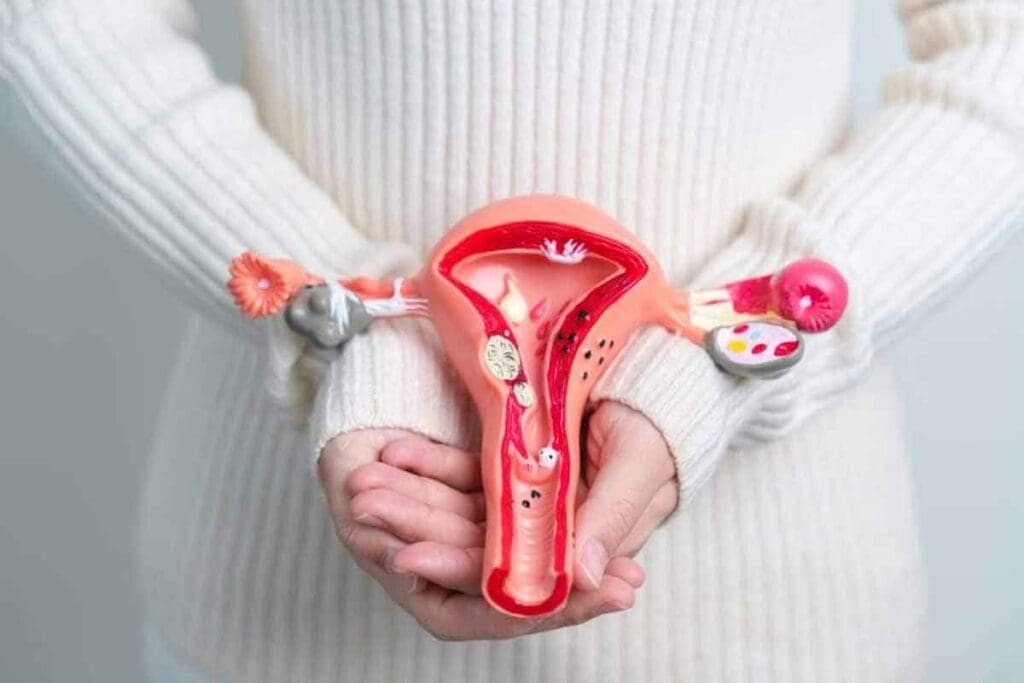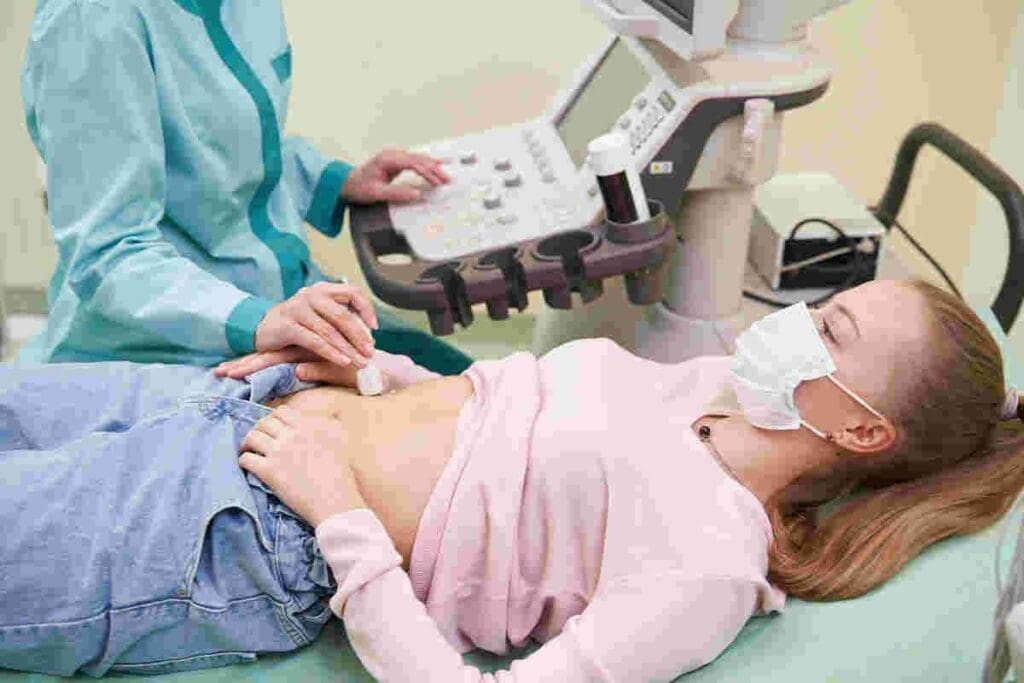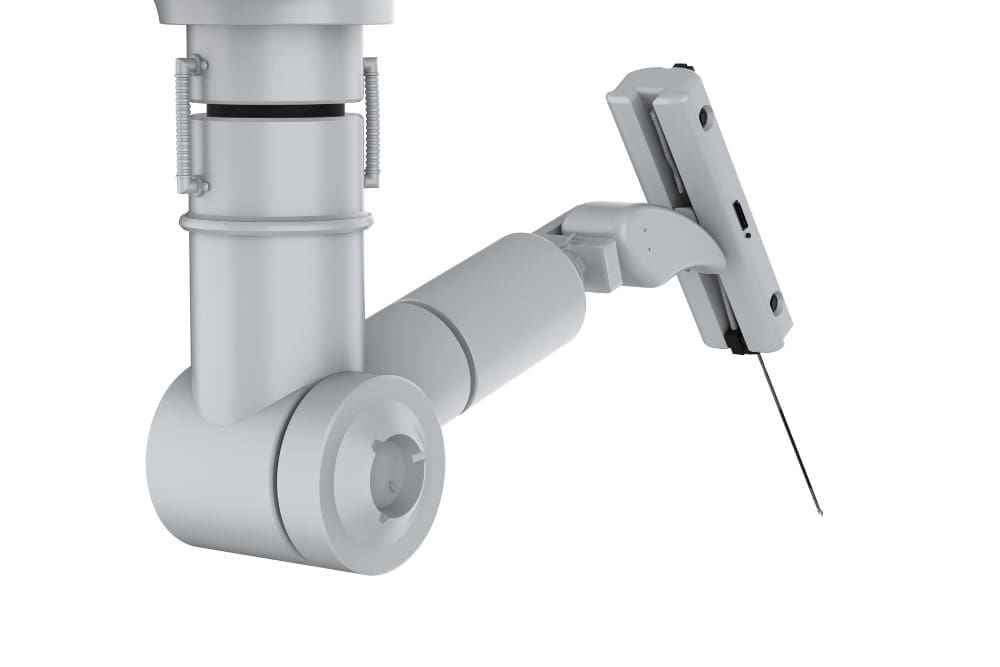Last Updated on November 26, 2025 by Bilal Hasdemir

Women looking for fibroid treatments often want quick recovery times. Radiofrequency ablation is a promising option. It offers a much shorter recovery period than traditional surgeries.
Procedures like Acessa and Sonata System are known for their quick results. They have recovery times from 1 to 7 days. This means patients can get back to their daily lives fast.
Liv Hospital focuses on safe and effective care. Knowing the recovery process helps manage expectations. It ensures a smooth return to daily activities.
Key Takeaways
- Radiofrequency ablation offers a shorter recovery time compared to traditional surgery.
- Procedures like Acessa and Sonata System have recovery times ranging from 1 to 7 days.
- Liv Hospital provides patient-centered care for effective treatment.
- Understanding the recovery process is key for a smooth transition.
- Minimally invasive treatments reduce downtime for patients.
Understanding Fibroid Ablation: A Minimally Invasive Alternative

Fibroid ablation is a new, less invasive way to treat uterine fibroids. It uses heat from radiofrequency waves to kill fibroid tissue. This method is a gentler option compared to old surgical ways.
What is Radiofrequency Ablation for Fibroids?
Radiofrequency ablation (RFA) for fibroids uses radio waves to heat and shrink tumors. This minimally invasive technique helps reduce symptoms like heavy bleeding and pain. It does this without taking out the uterus.
The RFA process starts with a special device being put into the fibroid. This device sends out radio waves, heating the tissue until it dies. This makes the fibroid smaller.
Common Symptoms Treated by Fibroid Ablation
Fibroid ablation mainly targets symptoms from uterine fibroids. These include:
- Heavy or prolonged menstrual bleeding
- Pelvic pain or pressure
- Frequent urination due to fibroid pressure on the bladder
- Bloating and discomfort
By shrinking the fibroids, ablation therapy can greatly lessen these symptoms. This improves life quality for many women.
Types of Ablation Techniques for Fibroids
There are several ways to treat fibroids with ablation. These include:
- Laparoscopic radiofrequency ablation, which uses small cuts in the belly to reach the fibroids.
- Transcervical radiofrequency ablation, a method that goes through the cervix, making no cuts in the belly.
Tools like Acessa and Sonata are used in these methods. They provide precise and effective treatments.
Key Fact #1: Ablation for Fibroids Recovery Time Ranges from 3-7 Days

Knowing how long it takes to recover from ablation for fibroids is key for those thinking about it. This treatment is popular because it works well and doesn’t take long to get back to normal.
Average Recovery Timeline Breakdown
The recovery time for ablation for fibroids usually lasts from 3 to 7 days. This can change a bit based on the method used, like Acessa, which might take 5-7 days. Here’s what patients can generally expect:
- First 24-48 hours: Rest and relaxation are key. Patients might feel cramping and spotting.
- 2-3 days post-procedure: Start to do light activities again. Most can go back to easy tasks.
- 4-7 days post-procedure: Most patients are fully recovered and back to their usual life.
Factors Affecting Individual Recovery Speed
Several things can affect how fast someone recovers after ablation for fibroids. These include:
- The size and number of fibroids treated
- The patient’s overall health
- The specific ablation technique used
- Following the post-procedure care instructions
Knowing these factors can help patients get ready for their recovery and set realistic expectations.
Comparison with Recovery from Hysterectomy and Myomectomy
Compared to bigger surgeries like hysterectomy and myomectomy, ablation for fibroids has a much shorter recovery. Hysterectomy recovery can take 4 to 8 weeks, and myomectomy can take 2 to 6 weeks. The quicker recovery of ablation makes it a great choice for those wanting to get back to their life fast.
By understanding the recovery time and what can affect it, patients can make better choices about their treatment.
Key Fact #2: The Procedure is Typically Performed as Outpatient
Fibroid ablation is an outpatient procedure. This means patients can go home soon after treatment. It’s great for those who don’t want to stay in the hospital for a long time.
What to Expect During the 90-120 Minute Procedure
The procedure lasts about 90 to 120 minutes. Patients are under sedation or light anesthesia to feel less pain. The doctor uses imaging to find the fibroids and then uses radiofrequency energy to treat them.
Same-Day Discharge Process
After the procedure, patients go to a recovery area. They are watched for a few hours. Most women can go home the same day, usually within 2-4 hours. It’s important to have someone drive you home.
Immediate Post-Procedure Care
Right after, you’ll manage any pain with over-the-counter meds. Rest and avoid hard activities for the day. Also, eat soft or liquid foods for the rest of the day.
When Overnight Observation May Be Necessary
Some patients might need to stay overnight. This depends on the fibroids’ size, your health, or if complications happen. Your doctor will talk about this if it’s needed for your case.
| Procedure Aspect | Details |
| Procedure Duration | 90-120 minutes |
| Anesthesia Used | Conscious sedation or light anesthesia |
| Same-Day Discharge | Typically within 2-4 hours |
| Post-Procedure Care | Rest, pain management, soft diet |
Key Fact #3: What to Expect During the First Week After Ablation
Right after fibroid ablation, you might feel some symptoms and need to take certain precautions. Your body is healing from the procedure, and you’ll notice different feelings.
Managing Common Symptoms: Cramping and Spotting
Cramping and spotting are common after fibroid ablation. Cramping can be eased with over-the-counter pain meds. Spotting usually stops in a few days. Always follow your doctor’s advice on pain and report any heavy bleeding.
Be ready for how bad and long symptoms last. Keeping a symptom journal helps track your healing and any worries to share with doctors.
Pain Management Strategies
Managing pain well is key during recovery. Here are some ways to do it:
- Use over-the-counter pain relievers as directed
- Apply heat to the lower abdomen to ease cramping
- Rest and avoid hard activities
It’s important to stick to your healthcare team’s pain management plan.
Activity Restrictions and Gradual Return to Normal Routine
Following activity restrictions is part of healing. You’ll likely be told to avoid heavy lifting, bending, and hard exercise for a few days to a week. Slowly getting back to normal activities helps your body heal right.
Knowing what to expect in the first week after fibroid ablation helps you manage your recovery. It also helps avoid any big problems.
Key Fact #4: Long-Term Recovery and Fibroid Shrinkage Timeline
After fibroid ablation, patients often ask about the long-term recovery and when symptoms will improve. The recovery journey has several stages, each with its own timeline and characteristics.
Gradual Symptom Improvement Process
The improvement in symptoms is gradual. Most women see significant relief a few months after the procedure. Improvement in symptoms like heavy bleeding and pelvic pressure can start as early as 3-6 months.
Timeline for Fibroid Reduction
Fibroids shrink over time after treatment. Studies show significant shrinkage between 6 to 12 months post-procedure. The exact time can vary based on factors like fibroid size and number.
Follow-up Appointments and Monitoring
Follow-up appointments are key for tracking fibroid shrinkage and recovery. These visits usually happen at 3, 6, and 12 months after the procedure. Healthcare providers check the fibroid size and symptom improvement during these visits.
Long-term Benefits of Non-Hormonal, Uterine-Sparing Treatment
Ablation therapy has long-term benefits as a non-hormonal, uterine-sparing treatment. It keeps the uterus intact and avoids hormonal treatments. This makes it a good choice for women who want to keep their fertility or avoid hormonal therapies.
| Timeline | Expected Outcome |
| 3-6 months | Significant improvement in symptoms like heavy bleeding and pelvic pressure |
| 6-12 months | Noticeable fibroid shrinkage |
| 1-2 years | Continued symptom relief and further fibroid reduction |
Key Fact #5: Laparoscopic vs. Transcervical Approaches: Recovery Differences
When thinking about radiofrequency ablation for fibroids, knowing the difference between laparoscopic and transcervical approaches is key. Both are minimally invasive but have different recovery times. It’s important to understand these differences.
Recovery Specifics for Laparoscopic Radiofrequency Ablation
Laparoscopic radiofrequency ablation, like the Acessa procedure, uses small cuts in the abdomen. This method involves using a laparoscope and tools to treat fibroids. Recovery usually means managing pain with medication and rest.
Most people can get back to their usual activities in about a week. The laparoscopic method allows for clear views of the fibroids, which can lead to more accurate treatment. But, it might take a bit longer to recover because of the abdominal cuts.
Recovery Specifics for Transcervical Radiofrequency Ablation
Transcervical radiofrequency ablation, shown by the Sonata System, goes through the vagina. This means no cuts in the abdomen. It often leads to less pain after the procedure and quicker recovery, with many people getting back to normal in a few days.
This approach is less invasive than laparoscopic methods. It might lower the risk of complications and help with faster healing.
How to Choose the Right Approach for Your Situation
Deciding between laparoscopic and transcervical radiofrequency ablation depends on several things. These include the size, number, and location of your fibroids, and your overall health. It’s important to talk to a healthcare provider to find the best option for you.
Consider the availability of advanced technologies like Acessa and Sonata System in your area. Also, think about the expertise of your healthcare provider.
Advanced Systems: Acessa, Sonata, and Other Technologies
Systems like Acessa and Sonata have changed how we treat fibroids with radiofrequency ablation. They allow for real-time monitoring and precise control, making the procedure more effective.
The choice between these systems depends on your fibroids and your health needs. Talking to your healthcare provider about the benefits and limitations of each can help you make a good choice.
Key Fact #6: Preparing for Your Procedure to Optimize Recovery
To make your recovery from fibroid ablation smooth, prepare well before the procedure. Good preparation can reduce risks and make recovery easier.
Pre-Procedure Instructions and Preparations
Your doctor will give you specific instructions before the fibroid ablation. These might include what to eat, what medicines to take, and other steps to get ready.
Dietary Restrictions: You might need to avoid certain foods or drinks. It’s important to follow these instructions to stay safe.
Setting Up Your Recovery Space at Home
Having a cozy recovery space at home can help a lot. Think about setting up a comfy area with:
- Soft bedding and pillows
- Things to keep you entertained, like books or TV
- Easy access to snacks and water
- A phone or device to stay in touch
Items to Have on Hand for Recovery
Having the right things can make recovery more comfortable. Some must-haves include:
| Item | Purpose |
| Comfortable clothing | Wear loose, comfy clothes to relax |
| Pain management medication | Use as directed by your doctor to manage pain |
| Heating pads or warm compresses | Help with cramps and discomfort |
Support System Planning
Having people to support you can greatly improve your recovery. Think about:
- Having a friend or family member with you at the procedure
- Someone to help with chores and errands while you recover
- Regular visits from friends or family
By preparing well and having a support system, you can make your recovery smoother and more comfortable.
Key Fact #7: Possible Complications and When to Seek Medical Attention
Fibroid ablation is usually safe, but knowing about possible complications is key for a smooth recovery. It’s important to understand the risks and know when to get medical help. This can greatly affect the outcome.
Normal vs. Abnormal Post-Procedure Symptoms
After fibroid ablation, some discomfort, cramping, or spotting might happen. These are usually normal and temporary. But, it’s vital to tell the difference between normal symptoms and complications. Severe pain, heavy bleeding, or fever could mean a problem.
Normal symptoms usually go away in a few days to a week. If they don’t or get worse, you might need to see a doctor.
Warning Signs During Recovery
Knowing the warning signs during recovery is important. This way, you can get medical help quickly. Some signs to watch for include:
- Increasing pelvic pain or cramping
- Heavy or prolonged vaginal bleeding
- Fever above 100.4°F (38°C)
- Foul-smelling vaginal discharge
- Severe abdominal pain
Emergency Situations Requiring Immediate Care
Sometimes, complications can happen that need immediate medical help. These emergencies might include:
- Severe allergic reactions to medications
- Significant infection signs, such as high fever or chills
- Heavy bleeding that doesn’t stop
If you see any of these symptoms, getting immediate medical care is critical.
Long-term Success Rates and Possible Need for Re-treatment
Fibroid ablation often has good long-term success rates, with many feeling much better. But, there’s a chance fibroids could come back. Studies show:
| Study | Success Rate | Re-treatment Rate |
| Study A | 85% | 10% |
| Study B | 90% | 5% |
| Study C | 80% | 15% |
Regular check-ups with your healthcare provider are important. They can help watch for any return of fibroids and decide if more treatment is needed.
Conclusion: Is Fibroid Ablation Right for You?
Fibroid ablation is a top choice for treating uterine fibroids. It’s less invasive and offers quick recovery and lower costs. The Enhanced Recovery After Surgery (ERAS) program has made it even better. It cuts down on hospital stays and opioid use.
This treatment has many perks. It means you’ll likely spend less time in the hospital and pay less. It also reduces nausea and vomiting after surgery. Plus, it uses more effective pain relief methods.
Thinking about fibroid ablation? It’s important to consider your health, fibroid size, and what you prefer. Talking to a doctor is key to deciding if it’s right for you.
Knowing the pros and cons of fibroid ablation helps you make a smart choice. As medical tech gets better, treatments like this offer new hope for those with fibroids.
FAQ
What is the typical recovery time for ablation for fibroids?
Recovery time for ablation for fibroids is usually 3 to 7 days. This can vary based on your health, the size and number of fibroids, and the ablation technique used.
How does the recovery time for ablation compare to other surgical procedures like hysterectomy and myomectomy?
Ablation for fibroids has a shorter recovery time than hysterectomy and myomectomy. While those procedures take weeks to recover from, ablation lets patients get back to normal in a week.
What can I expect during the ablation procedure?
The ablation procedure, lasting 90-120 minutes, is done under anesthesia or sedation. It uses radiofrequency energy to shrink the fibroids. Most patients go home the same day, but some might need to stay overnight.
How do I manage symptoms like cramping and spotting after the procedure?
To handle cramping and spotting, use over-the-counter pain relievers and apply heat to your lower abdomen. Resting is also helpful. Your doctor might prescribe more pain medication if needed.
What are the long-term benefits of choosing ablation for fibroids?
Choosing ablation for fibroids offers long-term benefits like reduced symptoms and preserving the uterus. It’s a non-hormonal treatment that can significantly shrink fibroids, improving your quality of life.
How do laparoscopic and transcervical approaches to radiofrequency ablation differ in terms of recovery?
Laparoscopic radiofrequency ablation involves small abdominal incisions, leading to slightly longer recovery times. Transcervical radiofrequency ablation is a completely internal procedure, accessed through the cervix, with potentially quicker recovery.
What are the possible complications after fibroid ablation, and when should I seek medical attention?
Possible complications include infection, bleeding, and damage to nearby organs. Seek medical help for severe pain, heavy bleeding, fever, or any other concerning symptoms.
How can I prepare for my ablation procedure to optimize recovery?
Prepare by following your doctor’s pre-procedure instructions and setting up a comfortable recovery space at home. Have necessary items ready and plan for support. Discuss any specific needs or concerns with your healthcare provider.
What is the timeline for fibroid shrinkage after ablation?
Fibroid shrinkage after ablation varies, but most see significant size reduction in 3-6 months. Improvement continues over the next few months.
Are there any activity restrictions after ablation for fibroids?
Yes, avoid heavy lifting, strenuous exercise, and sexual activity for a few days to a week after ablation. Gradually return to normal activities as you feel comfortable.
Reference
- Chen, I. (2024). Radiofrequency ablation for the treatment of uterine fibroids. Journal of Minimally Invasive Gynecology. Retrieved from https://www.sciencedirect.com/science/article/pii/S1553465024004163






